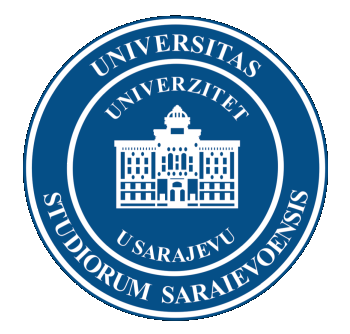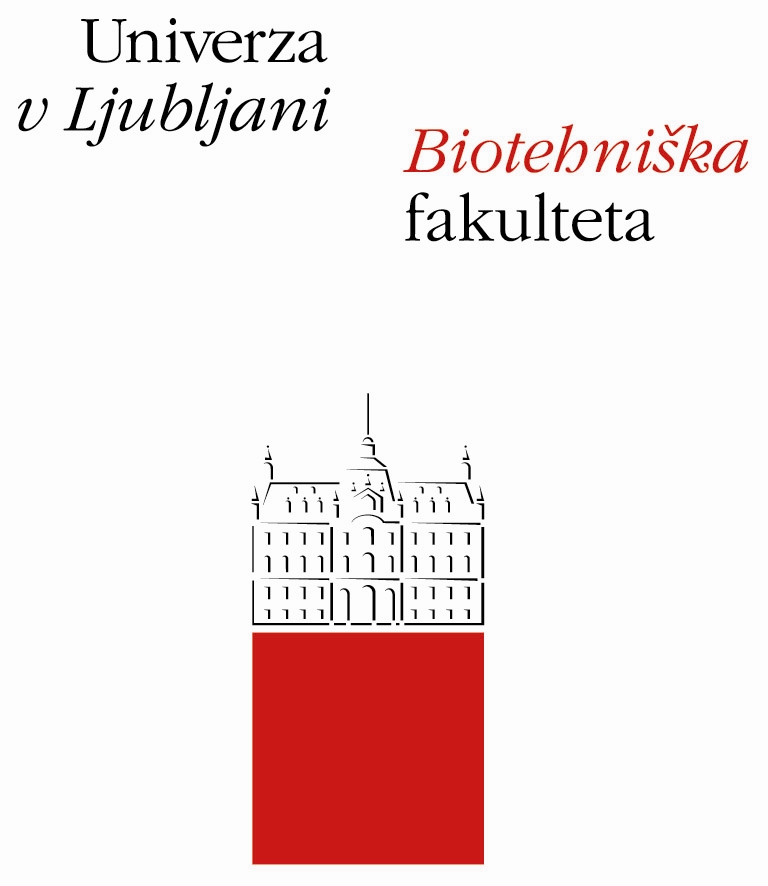With 16 CASEE members, our network is prospering successfully!
Current member institutions:
Albania
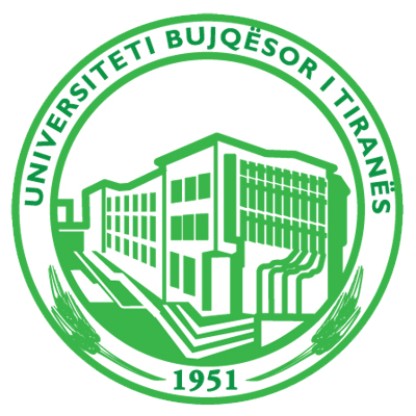 Agricultural University of Tirana
Agricultural University of Tirana
Agricultural University of Tirana (AUT) was founded on 1 November, 1951 and is the unique centre for education in the field of agriculture in Albania. AUT is constituted of 5 faculties; it offers 54 study programs and BSc, MSc and doctoral diploma. AUT participates in many national and international projects and it has established broad international cooperation. AUT publishes two scientific magazines holding ISSN: “Albanian Magazine of Agricultural Sciences” and “Economy and Agro-Business”.
Austria

University of Natural Resources and Life Sciences, Vienna
BOKU – University of Natural Resources and Life Sciences is a unique Austrian research and teaching organisation with a strong focus on renewable resources, living space and quality of life as well as food chain and health issues. BOKU innovatively combines fundamental and applied expertise in the fields of natural sciences, engineering and planning sciences, and social and economic sciences to enhance the knowledge for sustainable management of our natural resources.
Approximately 20% of the 12.000 students are international students. BOKU has around 1111,7 scientific staff members (FTE) and 414,7 administrative/technical staff members (FTE). The university currently offers nine bachelors programmes, 26 masters programmes and several doctoral programmes; eight of the master's programmes are offered in collaboration with international universities and institutions.
Bosnia and Herzegovina
University of Sarajevo, Faculty of Agriculture and Food Sciences
The University of Sarajevo is the oldest and largest university in Bosnia and Herzegovina. Its roots go back to the Ottoman Empire, where it was established in 1531 as an Ottoman Islamic law college. The university, in its modern secular incarnation, was established in the middle of the 20th century. Today, with 20 faculties, three academies and three faculties of theology and with 30,866 enrolled students as of school year 2014/15, it ranks among the largest universities in the Balkans in terms of enrollment. Since opening its doors in 1949, over 120000 students have graduated from a bachelor programme, nearly 4000 from a master's programme, and nearly 2300 received a doctoral degree in 45 different areas. Nowadays, it has the reputation of the most prestigious university in Bosnia and Herzegovina and employs more than a thousand faculty members.
Croatia
 University of Zagreb, Faculty of Agriculture
University of Zagreb, Faculty of Agriculture
Numerous programs are implemented based on our scientific research activities in the field of:
- soil and water resources management;
- field crops production and use systems;
- plant protection within the sustainable agriculture system;
- organic food production;
- feed management;
- introduction of new and preservation of traditional food production technologies;
- conservation of biodiversity of agricultural plant and animal genetic resources;
- use of quantitative and molecular methods in animal and plant breeding;
- energy, ecology and ergonomics in plant science;
- agriculture and rural areas in the light of the European integration process;
- evaluation and conservation of landscape, garden and park heritage;
- socioeconomic and marketing analyses of the Croatian agricultural sector;
- competitiveness of Croatian agriculture in local and international markets.
Faculty of Agrobiotechnical Sciences Osijek, Josip Juraj Strossmayer University of Osijek
http://www.fazos.unios.hr/
Faculty of Agrobiotechnical Sciences Osijek is part of the Josip Juraj Strossmayer University of Osijek and is one of its oldest members. 18 October 2020 marked exactly 60 years of its foundation.
Besides teaching students at undergraduate, graduate and postgraduate studies, the major activity of the Faculty is scientific research, primarily in the field of Agriculture and Biotechnology.
Scientific and teaching faculty have the task of educating students, gradually introducing them into the world of basic knowledge about plants, animals and farming technologies so that they could independently manage processes of agricultural production, whose ultimate goal is the production of food for the human community. In this complex process of education, teachers use their own knowledge of scientific and professional work, and thereby enhance and modernize the education of students. Alongside the education of students, research assistants together with professors and professional staff are engaged in research in the fields of biology, chemistry, nutrition and protection, genetics of plants and animals, engineering and economics in crop and livestock production, all with the aim of qualitatively and quantitatively improving food production and at the same time reducing production costs and conserving nature, environment and human health.
Czechia
Czech University of Life Sciences Prague
The Czech University of Life Sciences Prague consists of six faculties (Agrobiology, Food & Natural Resources; Economics & Management; Engineering; Environmental Sciences; Forestry & Wood Sciences, Tropical AgriSciences) and an Institute of Education & Communication. CZU offers bachelor, master and doctoral education for almost 21,000 students (incl. 5,500 international students) and annually organises about 10 summer schools for about 150 international students. Using the synergy of life sciences with engineering, economics and social sciences, the university addresses in its study and research programmes various topics: agriculture and processing of agricultural products, horticulture, landscape management, breeding and reproduction biotechnologies, natural resources management, animal husbandry, organic farming, agricultural economics, management and marketing, ICT, rural development, environmentally friendly waste management, alternative energy resources, environmental sustainability, ecology, protection of the environment, forestry management, wood processing, wildlife management, tropical and subtropical agriculture.
Hungary
Hungarian University of Agriculture and Life Sciences (MATE)
The Hungarian University of Agriculture and Life Sciences (formerly Szent István University) is one of the leading public higher educational institutions in Hungary. More than 17,000 students study in the 7 campuses of the university. MATE is traditionally very strong in agricultural and environmental sciences, but it also offers courses in veterinary medicine, natural sciences, mechanical engineering, economy and social sciences, architecture, health care as well as applied arts.
The university headquarters are located in the picturesque Gödöllő, but altogether 9 faculties and an institution accept students in Budapest, Jászberény, Békéscsaba, Szarvas and Gyula.
The university offers an exceptional blend of education programs from post-secondary level through BSc, MSc, and doctoral programs. Students may choose from various fields of study which absolutely meet or exceed European scale and quality standards. Regarding agricultural sciences, natural resource management, and environmental sciences the Faculty of Agricultural and Environmental Sciences offers the best education and research opportunities for international students and visiting scientists. Graduates can use their highly respected diplomas in many different fields of economy.
Poland
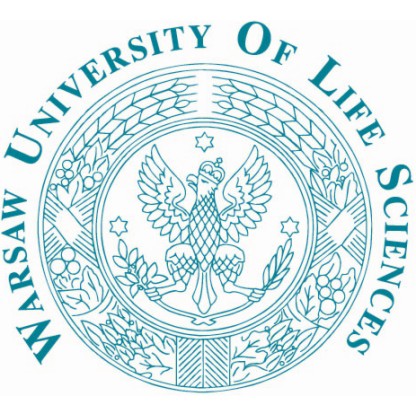 Warsaw University of Life Sciences
Warsaw University of Life Sciences
SGGW, with its nearly 200-year tradition, is one of the oldest and largest universities in Poland. It is also one of the most modern universities, where tradition and modernity meet. The campus has a historic part, with an 18th-century palace, and a contemporary part where all faculty buildings and dormitories are situated. WULS-SGGW offers good facilities and infrastructure in one place. On our 65-hectare main campus, we have 9 dormitories, a modern library, a computer centre, a sports centre (with tennis courts, a sports hall and a swimming pool) a language centre, a veterinary clinic and much more. The campus is located in the southern part of Warsaw and can be easily reached from the city centre by subway or by bus. Over 1,200 university teachers and instructors make sure that you will gain plenty of knowledge and practical skills. At present, the university consists of 13 faculties and 5 interfaculty units; there are 27,000 students enrolled. WULS-SGGW has been declared number one in the rankings of life science universities in Poland and has always been in the top ten of Polish universities.
Moldova
Technical University of Moldova
The fundamental mission of the Technical University of Moldova (UTM) is to provide the young generation with quality education. By combining educational excellence, research and innovation, the institution aims to contribute to building a sustainable knowledge-based society and economy while offering students opportunities for personality formation and development of creative and critical thinking skills.
UTM was founded in 1964 and began its activity with 3 engineering faculties. In 2022, following the merger by absorption of the State Agrarian University, the Technical University of Moldova expanded its educational offer by introducing 3 new faculties: FMV – Veterinary Medicine, FH – Horticulture, and FA – Agronomy, in agreement with the Government Decision No. 485 of 13/07/2022, regarding the reorganization through merger (absorption) of some institutions in the fields of education, research and innovation. Later, the Faculty of Horticulture and the Faculty of Agronomy were merged, forming the Faculty of Agricultural, Forest and Environmental Sciences. Thus, in addition to the 9 previously existing faculties, UTM now includes 11 faculties, and a qualified teaching and engineering staff of over 973 specialists. The current number of enrolled students is over 11,500. Economic globalization trends require the creation of a unique European Higher Education Area, according to the Bologna Process.
Romania
 USAMV - University of Agricultural Sciences and Veterinary Medicine Cluj-Napoca
USAMV - University of Agricultural Sciences and Veterinary Medicine Cluj-Napoca
The University of Agricultural Sciences and Veterinary Medicine Cluj-Napoca, located in the “heart” of Transylvania, Romania is celebrations soon 145 years of higher education in the Central-East European area. The university includes 5 faculties (Agriculture, Horticulture, Food Science and Technology, Animal Science and Biotechnology, Veterinary Medicine) with more than 7000 students ( BSc + MSc + PhD), 24 BSc programs, 22 MSc programs, 2 doctoral schools, 9 LonglifeLife learning programs, Erasmus students, more than 200 per year. The university staff has a prestigious activity and recognition at the national and international level, as academy members, members of International Commissions (including EU experts), members of ICA ( International Consortium on Agriculture) and CASEE ( ICA- branch for Central and East European Countries), AUF ( Agence Universitaire Francophone), etc.
More than 50% of the university budget is represented by National and International Research programs. Advanced research centres: Institute of Life Sciences, Biodiversity Research Centre, Research Platform for Biotechnology, 42 research centres and laboratories for consulting and services. The university was awarded by the Ministry of Education, Research and Youth, in 2007, for being the best Romanian research university, running 321 projects with only 268 staff and getting more than half of its budget from research and innovation activities.
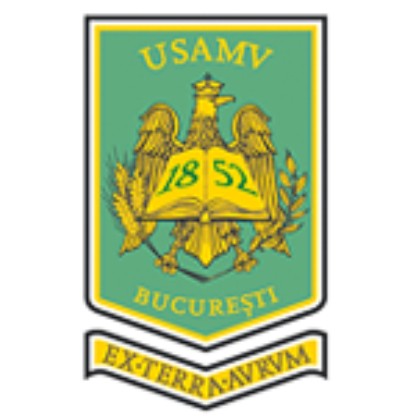 USAMV - University of Agronomic Sciences and Veterinary Medicine in Bucharest
USAMV - University of Agronomic Sciences and Veterinary Medicine in Bucharest
The University of Agronomic Sciences and Veterinary Medicine in Bucharest (UASVMB) is one of the oldest education institutions in Romania. It was established upon the initiative of the Prince of Walachia, Barbu Dimitrie Stirbei, who, in 1852, decided to establish “The Agricultural Institute in Pantelimon”. Nowadays, The University of Agronomic Sciences and Veterinary Medicine in Bucharest is a modern education institution with all higher education forms, ranging from BSc to MSc and PhD studies.
The UASVM Bucharest includes seven faculties in its structure:
- The Faculty of Agriculture
- The Faculty of Horticulture
- The Faculty of Animal Science
- The Faculty of Veterinary Medicine
- The Faculty of Land Improvement and Environment Engineering
- The Faculty of Biotechnologies
- The Faculty of Management, Economic Engineering in Agriculture and Rural Development
The quality of the education provided in the faculties’ auditoriums, laboratories and work experience centres has made the UASVMB the most representative and prestigious institution in the field of agronomic and veterinary education in Romania, many of its graduates have become outstanding personalities both in the domain of agricultural practice and in that of education, research and administration.

"Ion Ionescu de la Brad" Iasi University of Life Sciences (IULS), Romania
The "Ion Ionescu de la Brad" Iasi University of Life Sciences is a university of applied life sciences and environment, specialising in higher agronomic and veterinary medicine training, financed by the state and having as its fundamental mission the formation of agricultural, horticultural and animal husbandry engineers, economic engineers in agriculture and veterinarians.
More than 200 staff members are involved in teaching and research, providing educational services to more than 4200 students involved in Bachelor, Master and Doctorate educational levels, in accordance with the Bologna process.
The university offers multiple specialisations within its 4 faculties: Faculty of Agriculture, Faculty of Horticulture, Faculty of Food and Animal Sciences, Faculty of Veterinary Medicine.
 BUASVM - Banat's University of Agricultural Sciences and Veterinary Medicine „King Michael I of Romania" from Timisoara
BUASVM - Banat's University of Agricultural Sciences and Veterinary Medicine „King Michael I of Romania" from Timisoara
The Banat University of Agricultural Sciences and Veterinary Medicine is located in Timisoara, in Western Romania. The academic structure consists of six Faculties: the Faculty of Agriculture, the Faculty of Horticulture and Forestry, the Faculty of Farm Management, the Faculty of Veterinary Medicine, the Faculty of Food Processing Technologies, and the Faculty of Animal Husbandry and Biotechnologies, providing a full educational programme: Bachelor’s Degree, Master’s Degree, and PhD Degree. The researches of our academics and researchers are related to the following main domains: Agronomy, Horticulture, Veterinary Medicine, Food Processing Technologies, and Animal Husbandry, researches carried out in a high tech Interdisciplinary Training and Research Platform and other various laboratories.
Serbia
 University of Novi Sad, Faculty of Agriculture
University of Novi Sad, Faculty of Agriculture
University of Novi Sad, Faculty of Agriculture (UNSFA) was founded in 1954. The Faculty’s mission is to offer higher professional education as well as research and professional and advisory services in the area of agriculture and related sciences. With the variety of educational and research programmes, UNSFA encourages inter-disciplinary approaches to education and integral research influenced by the interest of various professions. With eight departments, four experimental stations and accredited laboratories, the faculty is considered to be a respectable institution in Serbia and in the region. More than 200 researchers are involved in various national and international projects. International cooperation is one of the strategic guidelines of the development and the Faculty is a member of several international associations. Great importance is given to networking with leading research centres in the country and abroad and the mobility of the Faculty's researchers. Orientation of the Faculty of Agriculture is the implementation of its multidisciplinary research and continuation of traditionally fruitful collaboration with various stakeholders (local and regional authorities, different SMEs, etc.), which fits into the internationalization agenda of the University of Novi Sad.
According to the QS World University Ranking by subject in the field of Agriculture and Forestry, and the Shangai University Ranking by subject in the field of Veterinary Medicine in five year period UNSFA is ranked between 200 and 300.
Slovakia
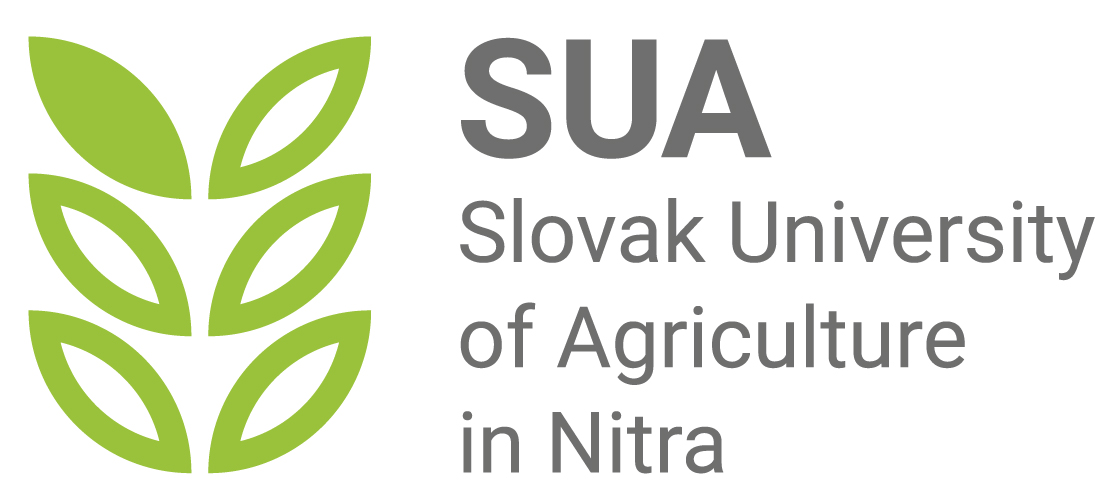 Slovak University of Agriculture in Nitra
Slovak University of Agriculture in Nitra
The main task of the Slovak University of Agriculture in Nitra (SUA) as the only educational and scientific institution of its kind in Slovakia is to provide university education in accordance with the Bologna strategy on the basis of scientific knowledge in the area of agriculture and related sciences. As the only agricultural university in Slovakia SUA has an exclusive position within the Slovak universities and nation-wide field of activity. At present, SUA is operating in a wide range of scientific fields such as genetics, biotechnology, agriculture, environment, food sciences, horticulture, landscape engineering and design, technology, engineering, economics, management, marketing with a focus on rural regions and regional development.
Slovenia
University of Ljubljana, Biotechnical Faculty
The University of Ljubljana is the oldest and the largest university in Slovenia. It was established in 1919 and it encompasses 26 full members (3 art academies and 23 faculties) and 3 associated members (National University Library, University of Ljubljana Central Technical Library, University of Ljubljana Innovation-Development Institute).
At the end of 2014, the Biotechnical Faculty had 537 employees, 2800 undergraduates (1st and 2nd cycle) and 160 doctoral students (3rd cycle).
The Faculty is divided into 7 departments: Department of Agronomy, Department of Animal Science, Department of Biology, Department of Food Science and Technology, Department of Forestry and Renewable Forest Resources, Department of Landscape Architecture and Department of Wood Science and Technology.
The Biotechnical Faculty offers 9 academic study programmes, 4 professional study programmes, 15 master study programmes and Interdisciplinary doctoral study program in Biosciences (in 16 scientific fields).
The research work is organised in 48 research teams. The Faculty is involved in approximately 203 research projects, of which 102 are national and 101 international projects. The Biotechnical Faculty has about 41 young researchers financed by the Slovenian Research Agency.



